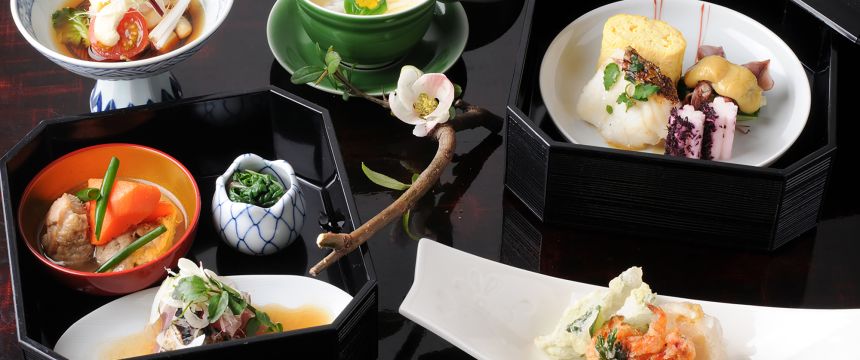Yanaka, Taito City, Tokyo - Kanto
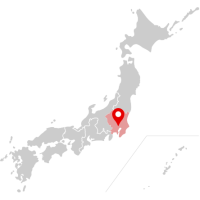
Sushi is already a global cuisine in many ways, and you would be hard put to find a major city that doesn’t have it. However, there is still so much of sushi culture that you can find only in Japan—bound to region, season, and local custom. Even if you think you have tasted it all, open your mind to new sushi frontiers, and you will discover that there is so much more to deceptively simple sushi than you thought.
The truly remarkable thing is that all the secrets of sushi are right in front of your eyes the whole time you are seated at the sushi counter. The chef prepares everything in full view—from cutting the fish to shaping the rice, right through to the final flourish as it is placed in front of you. But in order to learn the sleight of hand used in creating truly great sushi, you need someone to show you what to look for.
Order Seasonally
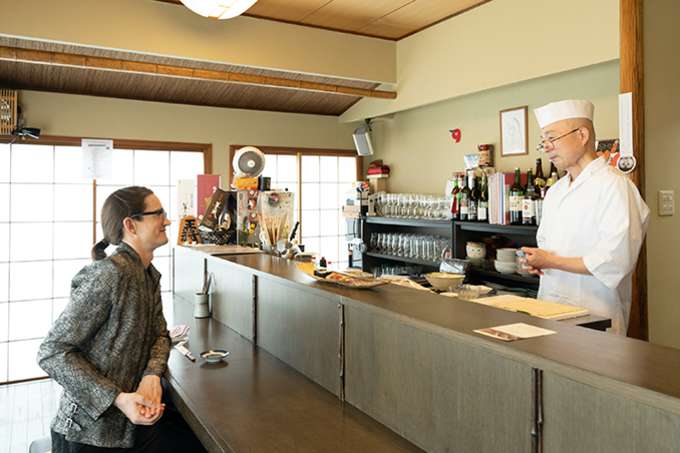
First, you need to learn how to read the inside of the restaurant. This can be accomplished fairly quickly since the design of most sushi restaurants is strikingly minimalistic, usually nothing more than a plain counter, which allows your eyes to focus on the main event, the chef preparing the sushi. Next, you should look for a seasonal menu, which you can use to break away from the usual sushi offerings and find out what is in season and what is local. If the menu is written only in Japanese, then simply ask the chef for recommendations, or osusume—a magic word that is your ticket to an extraordinary encounter.
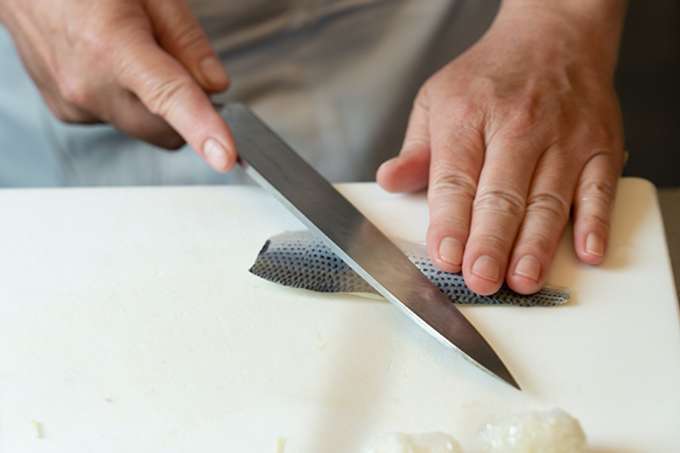
The reason for searching out the seasonal and the local goes to the very essence of sushi, unchanged for centuries prior to the advent of refrigeration as we know it today. Sushi relies on the flavor of fresh fish, so in the distant past you had to eat what was caught locally, ideally that very morning. This need for freshness led to a dynamic and diverse menu of sushi. Today, the ability to eat maguro (tuna) throughout the year is great, but there is so much more out there. However, you do need to be in the right place at right time to eat it. Having made the trip, you owe it to yourself to eat local.
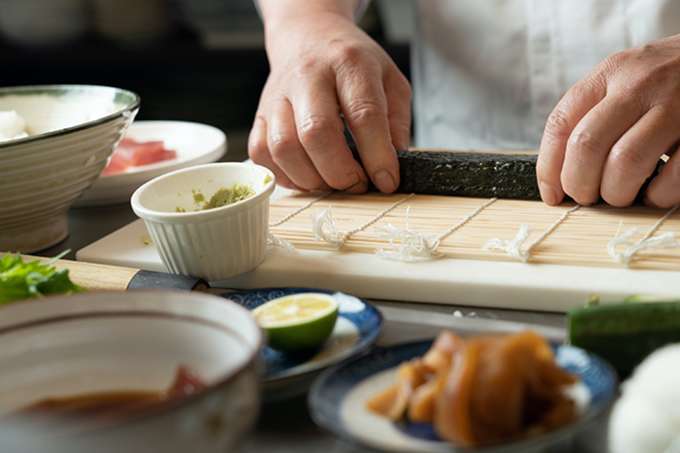
Seasonal sushi fluctuates throughout the year, and while the summer definitely serves up the most variety, there is some type of seafood in season all year-round wherever you happen to be on the Japanese archipelago.
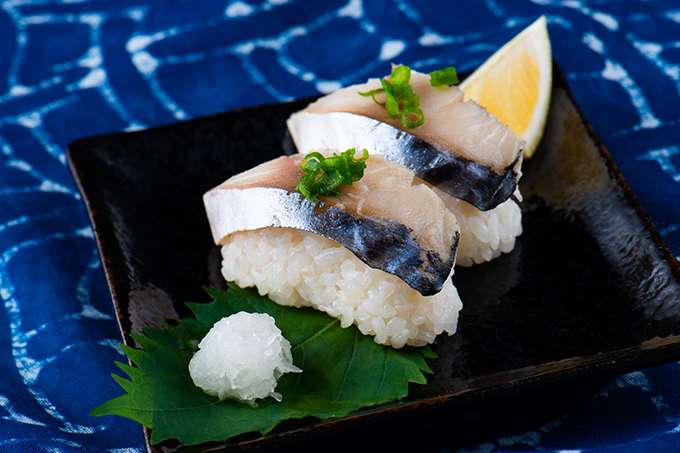
Interestingly, you don’t have to be on the coast to enjoy different varieties of fish. Landlocked regions are known for using pickled and dried fish in their specialty sushi. Case in point, saba (mackerel) sushi is the toast of central Kyoto. Far from the coast where it’s caught, this fish is preserved with salt, which results in a robust flavor that might surprise you.
Sushi Old Edo-Style
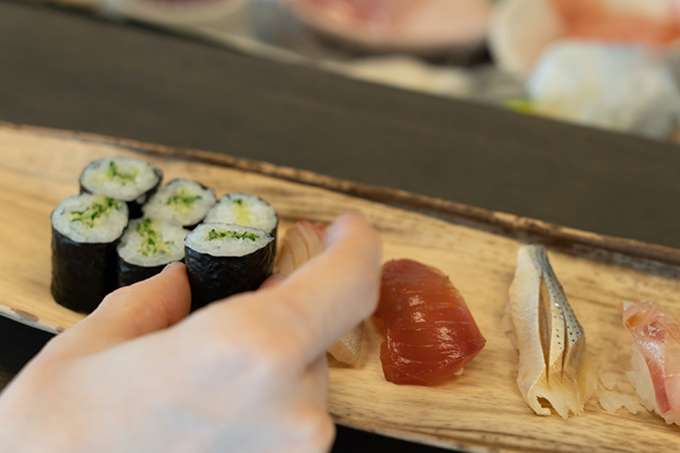
Contemporary sushi is the product of Edo, the city we now know as Tokyo. In the Edo period (1603-1867), those in the vast working class that powered the densely populated city needed to eat quickly at the end of the day. Cooking at home, where indoor lighting was something of a luxury, was eschewed, leading to a lively culture of eating while standing at street stalls before the sun set. This eating style, combined with ready access to fresh fish from the bay that Edo (now Tokyo) surrounded, led to the concept of fast-food fish.
Sushi nigiri-style, on a bed of rice in bite-size amounts, quickly developed and was perfect for eating fast and without chopsticks. This is a crucial point. While it is perfectly acceptable to eat it with chopsticks, sushi was originally eaten mostly by hand, a custom that continues to the present day, ironically at the better restaurants.
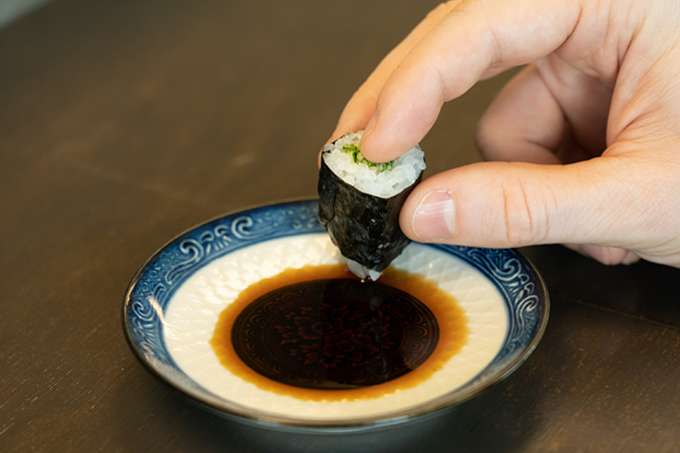
While you sit at the counter, the chef makes the sushi by hand and places it in front of you, usually with wasabi added between the fish and the rice. You then pick it up, without letting it sit too long, dip it in the shoyu (just a touch!), and eat it in one bite. There are few culinary traditions where such a connection exists between chef and customer, and its roots go all the way back to working-class Edo.
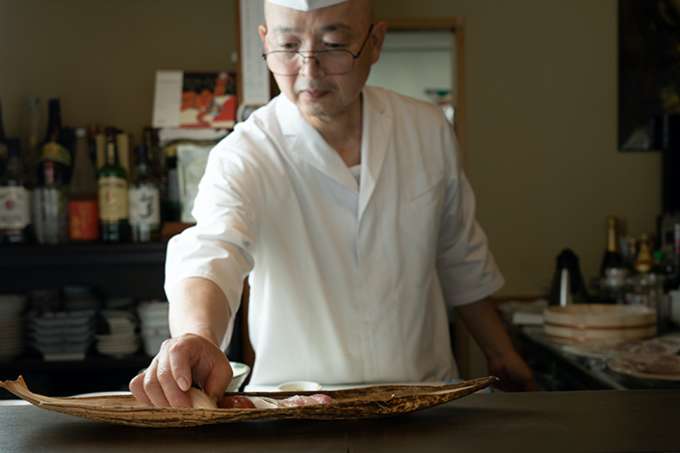
Communication between chef and customer flows both ways—the observant chef moderating the pace of serving the sushi if the customer is slow to eat or adjusting the amount of rice for each customer. You are more than welcome to let the chef know of anything you cannot or would prefer not to eat, and the chef will be more than happy to oblige. This is all part of the language of sushi.
Learn from the Experts
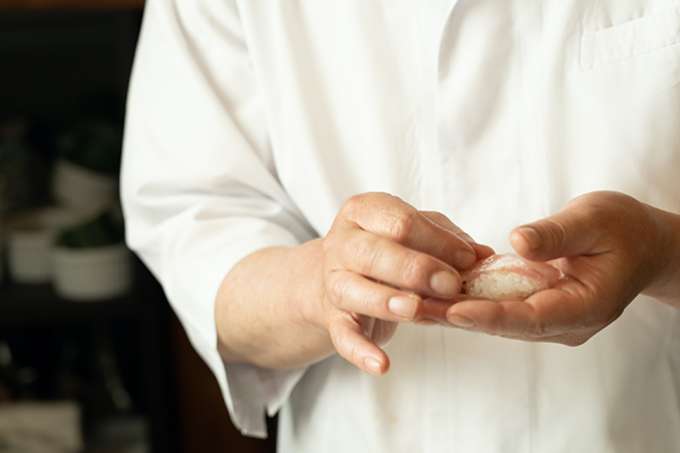
Now that you are comfortably sitting at the counter, ordering, and working through your sushi meal, you can start to decode the chef. However, this is easier said than done. The experienced sushi chef moves with such precision and purpose that it is not easy to parse the flicks of the knife and the other subtle movements that go into making this deceptively simple food.
If you are one who assumes that because sushi does not require “cooking” it must be terribly easy to make, you really ought to try making it yourself. While most restaurants will not allow you behind the counter, there are, fortunately, cooking schools where you can learn from a seasoned chef in English.
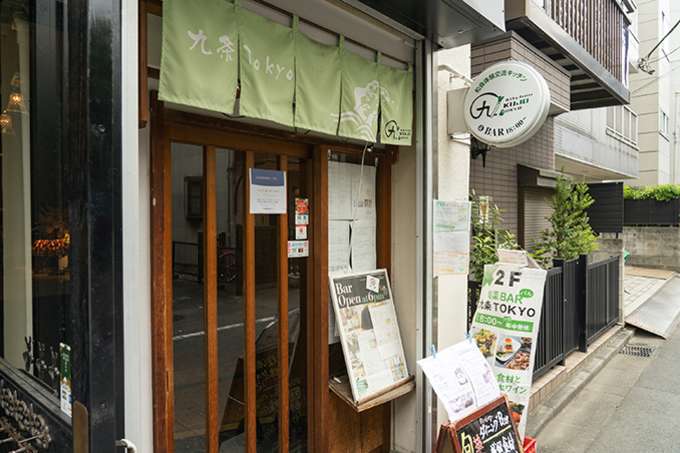
Kitchen Kujo Tokyo, close to the museum district of Ueno in central Tokyo, operates a cooking school that covers a variety of traditional Japanese cuisine, including various kinds of sushi.
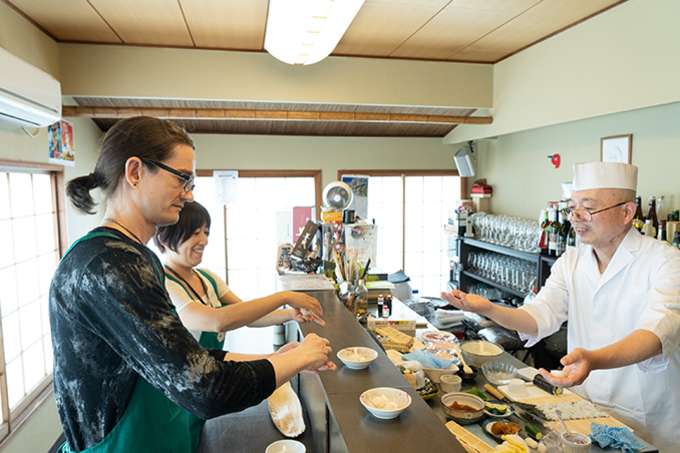
The first thing you discover is that you will learn by doing, so prepare to get your hands messy and perhaps end up with a mess as well. The moment you handle rice with warm hands, it sticks to your palms resulting in almost instant failure. Don’t worry, your chef is on hand to show you how to cool your hands in cooking vinegar and knead the rice into shape using the base of your fingers rather than your hot palms, and suddenly you have success!
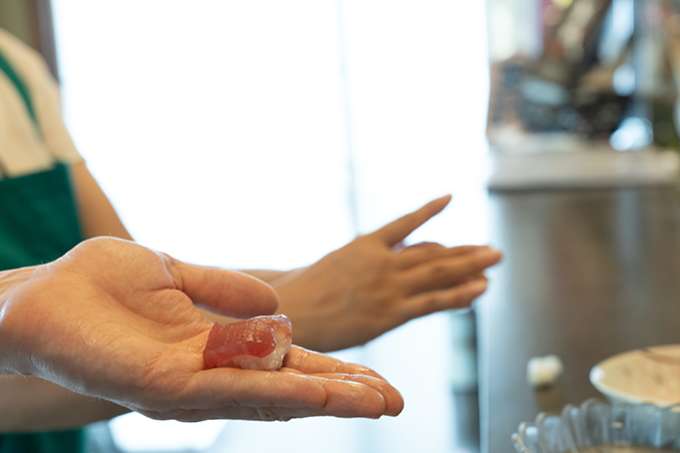
Shaping the rice that forms the plinth for the fish in conventional nigiri sushi is relatively simple, but when you taste your sushi along with that of your teacher, you will notice that rice kneaded by experienced hands has a different texture and also a different taste. It turns out that you even need to master the way the sushi is placed on the serving counter—with a special flourish that keeps the rice light and airy. You might have some way to go, but the rest is mostly delicious practice.
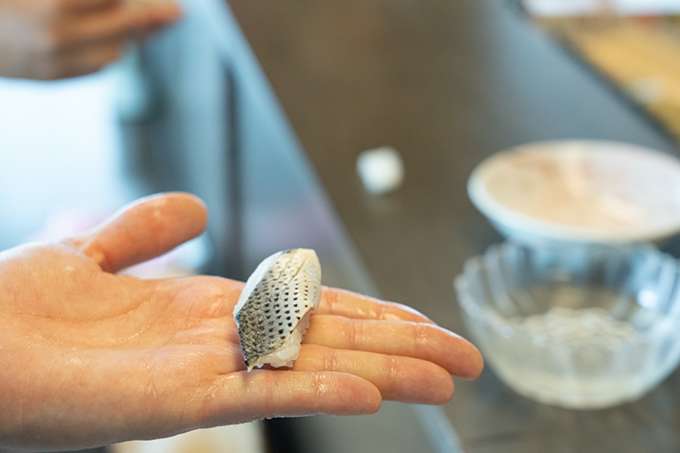
Even cutting the fish has many subtleties. You must not only “read” the fish to find the optimal cut but also place barely visible scoring on the surface of the fish to allow the subtle marinade to sink in before the fish takes pride of place on the rice.
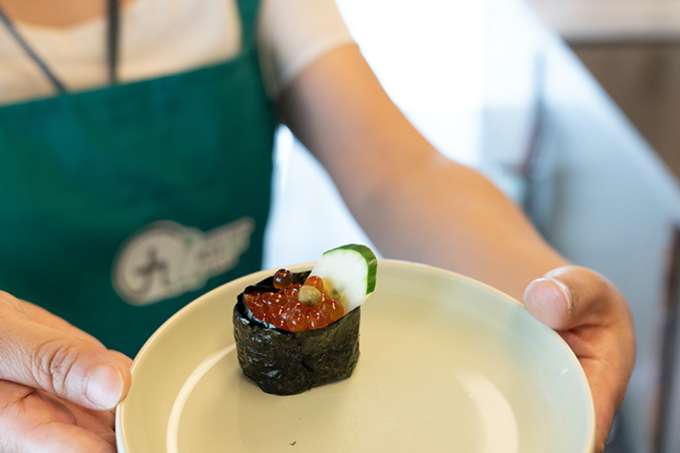
Graduating from nigiri sushi and moving on to rolls and other varieties, you quickly grasp that a lifetime is required to truly master sushi. Still, if the ingredients are sound, even amateur sushi can be remarkably tasty—so you can enjoy eating your way to sushi mastery.
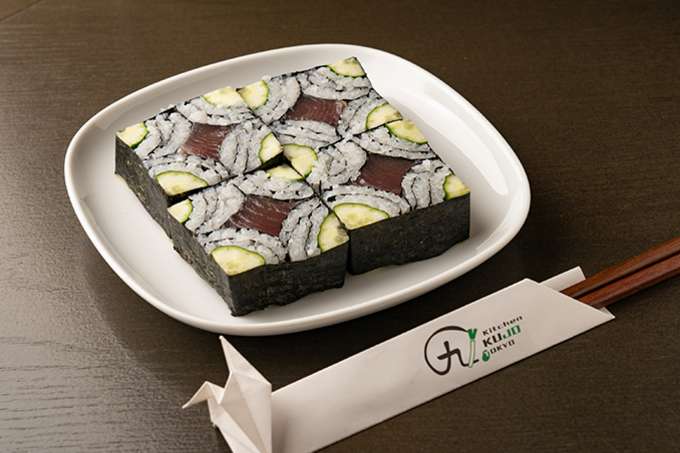
Whether you are sitting at the counter as a customer or showing off your skills to friends, learning the sushi basics is definitely the way to appreciate everything that goes into this quintessentially Japanese dish. Needless to say, if you are already well versed in making sushi, learning in Japan is the optimal way to take your skills to the next level!
Contact Information
Kitchen Kujo Tokyo
2F, 1-2-10 Yanaka, Taito City, Tokyo
How to Get There
Kitchen Kujo Tokyo is located in a quiet neighborhood in central Tokyo, a short walk from Nezu Station on the Tokyo Metro Chiyoda Line. It is also close to the hub of Ueno, making it a great escape from the hectic pace of the city if you are looking for somewhere a little more intimate. The retro building is next door to a temple and is an oasis of calm for a casual lunch or relaxing drink at the bar. In addition to cooking experiences, they offer cultural activities that include traditional tea ceremony and calligraphy.
Recommended Itineraries
Cooking experiences in English are rapidly gaining in popularity nationwide in Japan as travelers want to be able to take skills, and not just souvenirs, home with them. Once you have learned the basics, any restaurant with a counter can become your classroom as you observe the chef working in front of you. In fact, careful observation is how most apprentices start out in traditional Japanese restaurants, so you are in good company. Cooking experiences that cater to vegans or others with dietary requirements are common at studios offering classes in English.
Related Links
Sushi in Japan Guide (English)
Tokyo (English)
Map
Featured Cuisine
Cuisine using raw fish is broadly divided between sushi and sashimi. Sushi is served with rice, and sashimi is served as choice cuts of fish to be enjoyed on their own. Of course, there are many varieties and regional differences, including sushi with cooked fish and even with meat for that matter! If you think you have tasted all that the diverse and continually evolving world of sushi has to offer, you are probably mistaken. Dive deep and discover sushi for yourself on your travels.
-
Author
Author: Samuel
Originally from the UK, Samuel studied Japanese Studies in the UK before completing his post-graduate studies in Japan. Now with over a decade of writing about Japan for a number of publications, and teaching about Japanese art and design at university, he hopes to bring his love of Japan to a wide audience. His favorite Japanese food is takoyaki as the perfect street snack.
All information is correct as of the time of writing.
Please check for the latest information before you travel.





















































